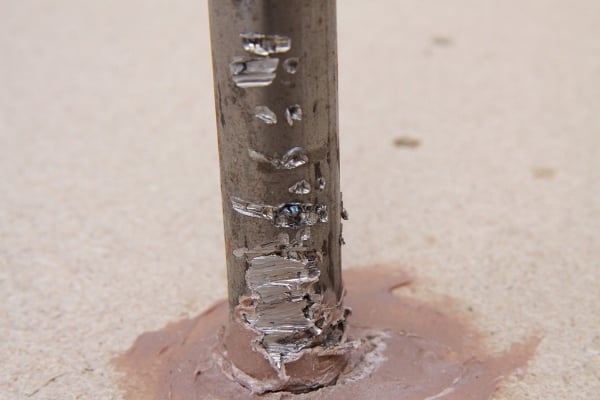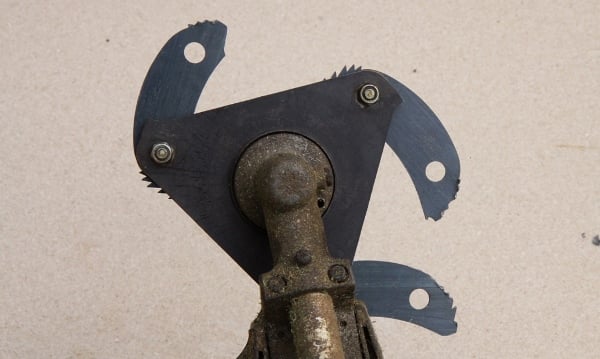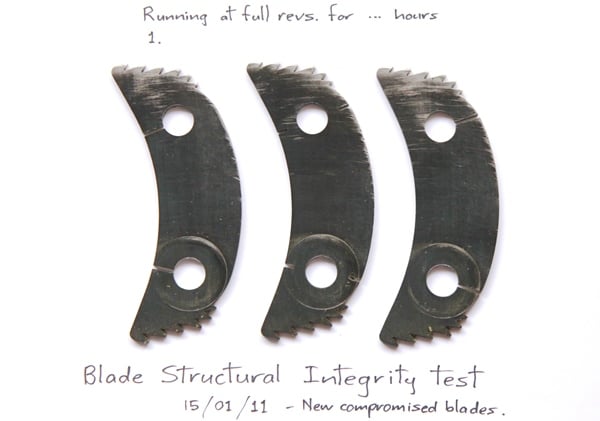BrushDestructor brushcutter blades has been subjected many hours trial and testing in the bush as well as being subjected to the following tests.
Australian Standards – AS3575-1995
The aim of this test is to see how the
BrushDestructor Blade would fare when hit against a metal bar at full revs.
The scope of the test is to determine the strength of a metal blade when fitted to a brush cutter.
Below are two sets of blades after testing; The first (left set) after impact with the bar at full revs and a strike velocity of 1m/s plus. This chipped the tips off each blade with each piece found found on the floor of the test rig within a 500mm radius of the steel bar suggesting that all of the energy was absorbed in the impact with the bar and that in this case the pieces posed no danger to properties or persons. The second test (right set) with newly turned over set of blades with several hours of use, after impact with bar at full revs and a strike velocity of 2m/s plus. Here you can see that the higher impact velocity resulted in impact on the first blade near the front of the blade, followed by impact a little higher up and then higher up again resulting in the bending of that blade. 
The aim of this test is to check the strength of the blade around the pivot holes.
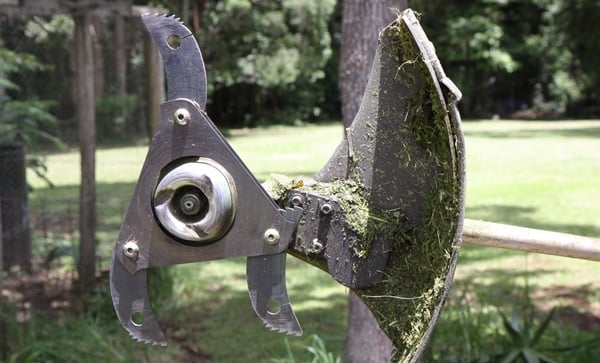

Below is a photo of the compromised blades after almost 2 hours; The tip of one blade broke off at 1 hour and 43 minutes while cutting through a 30mm gum sapling and as the tree was falling the cut line closed up wedging the blades resulting in the failure at the leading edge. The tip of the other blade broke off at 1 hour and 59 minutes when hitting an old hidden stump with some force. The third blade was used for another hour without failing. There were no failures at the pivot end of the flail blade. 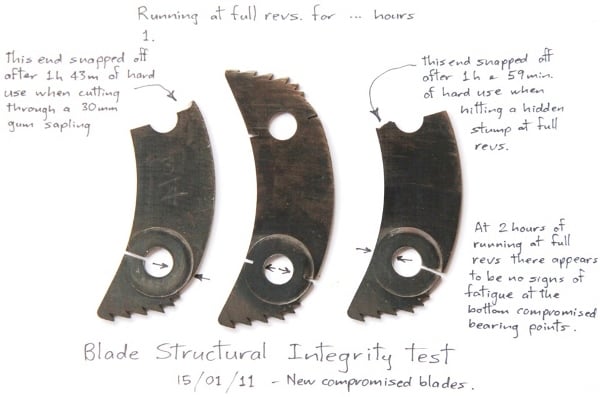
The aim of this test is to check the fasteners to see if they could come loose
Below is a photo of test to check for two things; Firstly to see if a locknut might vibrate itself loose. This lock nut was wound on and off twenty times to compromise the nylon locking strip and then left un-tightened on a longer bolt to see if it might vibrate off. It did not rotate even one degree after two hours of hard use. Secondly to see if a bolt which was not locked in place with a lock nut, would vibrate itself loss and allow a blade to fly free. Again after two hours of hard use the bolt did not even slightly come lose, concluding that there is so much shear load on the bolt while running that there is no way it can vibrate loose while in use. 
The aim of this test is to check by computer simulations, the stresses places on the hub and blades
Below are computer model images showing the stresses on the hub and blades at 15,000 rpm which is 50% above the general maximum rpm of most brush cutter heads. Top view showing stress loads throughout the metal parts while spinning at 15,000rpm. 

Analysis of Brush cutter blade to an angular velocity of 15000 Rpm.
Top view showing stress loads throughout the metal parts while spinning at 18,000rpm.
Andy Wirth CSWP, BEng Mech.
Phone 08 8557 7647 Mobile 0421 748 808



